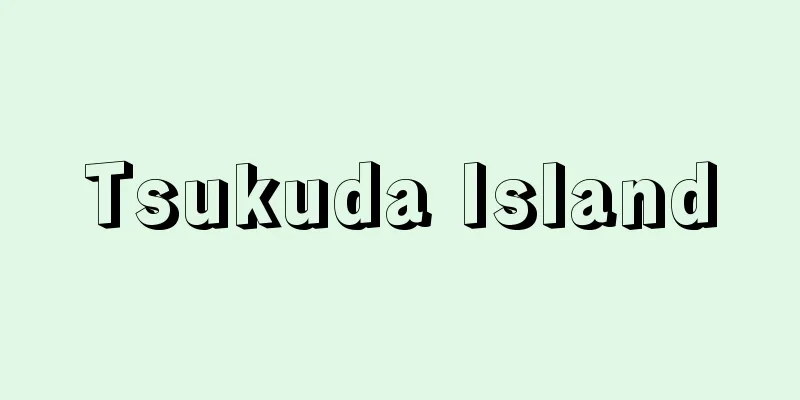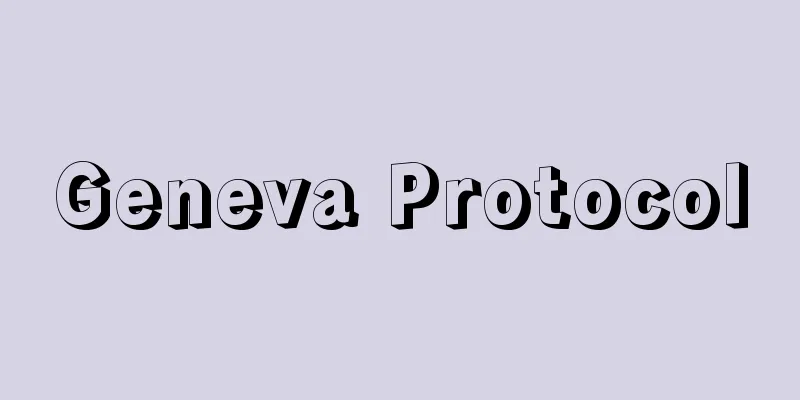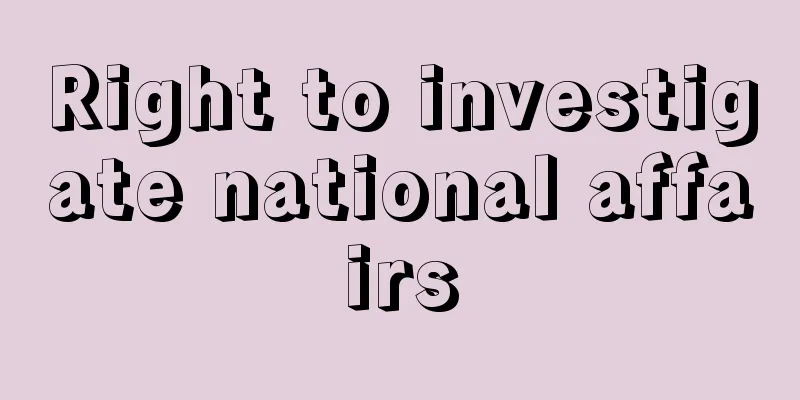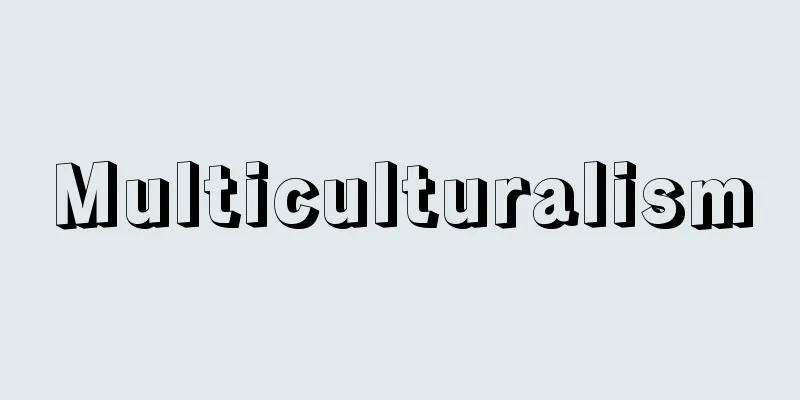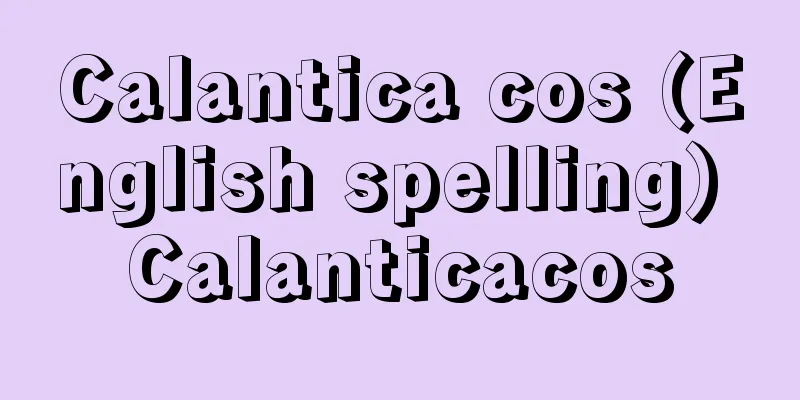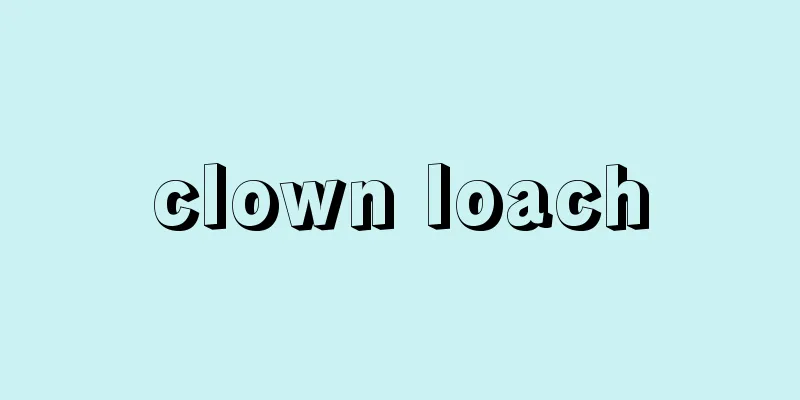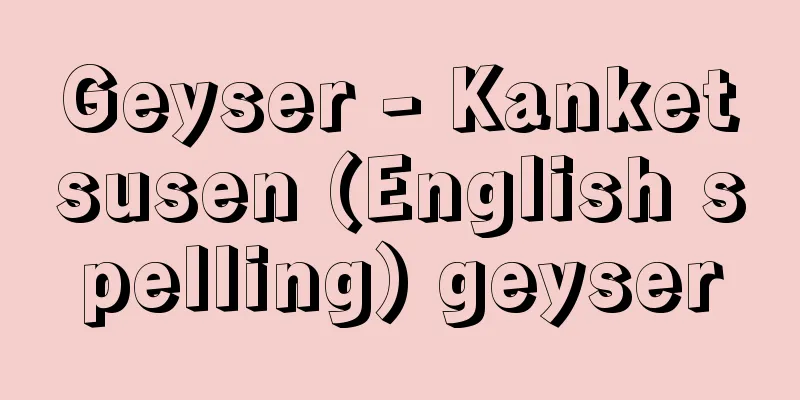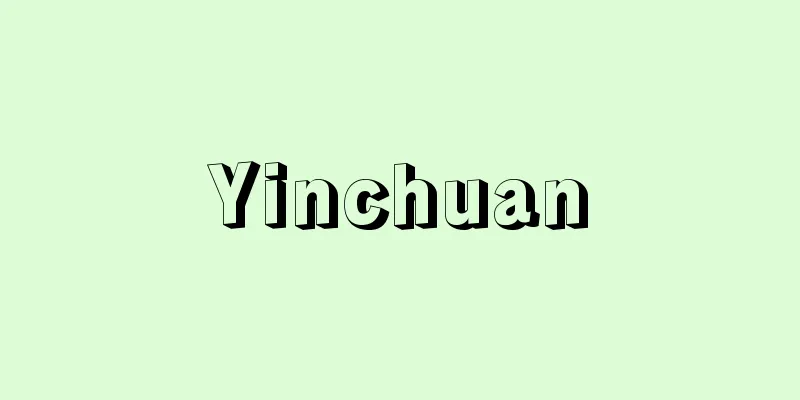Subversive Activities Prevention Law
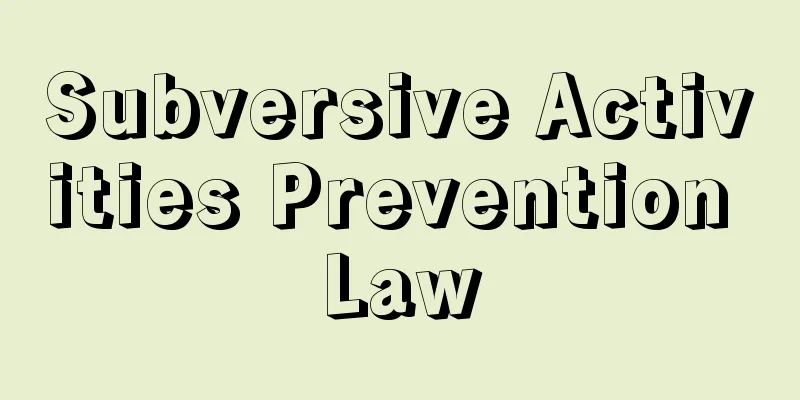
|
This law was enacted on July 21, 1952 (Showa 27) after the conclusion of the San Francisco Peace Treaty in 1952 (Showa 27) to replace the Ordinance for the Regulation of Organizations, etc., which was one of the occupation control laws, with the aim of maintaining public order within the country. It was Act No. 240 of 1952. It was a public order law modeled on the US Domestic Security Act of 1950 (McCarran Act), and is abbreviated to "Subversive Activities Prevention Act." [Masahiro Uzaki] Background and purpose of the enactmentThis law, first, orders organizations that engage in "violent subversive activities" as part of their organizational activities to prohibit public meetings, etc. and the printing and distribution of their journals, etc. (Article 5), and also stipulates measures to order the dissolution of the organization itself if it is deemed to be in danger of engaging in repeated violent subversive activities in the future (Article 7).Second, it provides for the punishment of those who prepare, conspire, advocate, instigate, or incite violent subversive activities (Articles 38 and following). "Violent destructive activities" as used in this Act include: In this way, the regulations imposed by the Subversive Activities Prevention Law restrict the freedom of assembly and association, as well as the freedom of speech and expression, guaranteed by Article 21 of the Constitution, by prohibiting or restricting group activities, dissolving groups themselves, and prohibiting the printing, distribution, and posting of documents, as well as broadcasting and communications.They are also characterized by the fact that they significantly expand the scope of prohibitions and punishments under the Criminal Code, and take regulatory measures from a thoroughly preventive perspective. [Masahiro Uzaki] The process of enacting the Anti-Subversive Activities ActAs we have seen, the preventive nature of the Subversive Activities Prevention Law was a strong threat to freedom of speech and expression, and for that reason strong opposition arose among the public. However, the government, which placed importance on maintaining public order, applied the Subversive Activities Prevention Law for the first time in October 1952, immediately after the law was enacted, in a case of Communist Party leaflet distribution, for the distribution of documents that called for civil unrest and asserted their legitimacy, and decided to indict those responsible. There have been four cases related to the Communist Party under the Subversive Activities Prevention Law, and in all of these cases the courts found the defendants not guilty, since the documents in question were not found to pose a clear and imminent danger. Later, in the Sanmu Incident of 1961, in which the defendants were indicted for procuring weapons and conducting shooting training in preparation for a coup d'état, and the United Red Army Incident of 1970, in which the defendants were indicted for preparing to manufacture bombs, the defendants were found guilty of conspiring to commit murder or obstruction of justice. Also, in relation to the riots that occurred just before the Diet ratified the Okinawa Reversion Agreement in 1971, a guilty verdict was finalized in a case in which a person was charged with inciting a riot for the purpose of promoting a political doctrine by giving a speech at a political rally. However, since the crime of incitement is deemed to be established simply by creating in a person a determination to commit a crime or providing a powerful stimulus that furthers that existing determination, it has the effect of restricting speech without questioning whether there is a clear and imminent danger of harm occurring, and has been criticized as infringing on the freedom of speech and expression, which is recognized as having a superior position in the human rights system as being essential to maintaining democracy and is strongly guaranteed. [Masahiro Uzaki] The Aum Shinrikyo incident and the enactment of the Organization Control LawThe above are cases where the Subversive Activities Prevention Law has been applied, but what should be noted here is that all of these cases are based on the provisions of Article 38 and subsequent Articles of the Subversive Activities Prevention Law, which punish those who prepare, plot, advocate, instigate, or incite violent subversive activities. In other words, the most important point of the Subversive Activities Prevention Law, namely, the provisions for the regulation of groups, such as the prohibition of group activities and the dissolution of groups themselves, have never been invoked. The background to this is that, as mentioned above, the Subversive Activities Prevention Law restricts the freedom of assembly and association and the freedom of speech and expression guaranteed by the Constitution, and goes beyond the scope of prohibitions and punishments under the Criminal Code, and because the restrictions on groups are imposed through a procedure in which the Public Security Examination Commission decides on them at the request of the Director-General of the Public Security Intelligence Agency (Articles 11 and 22), there were suspicions that the law was unconstitutional as it deprived the freedom of assembly and association, speech and publication through administrative measures without going through judicial procedures. However, the situation changed dramatically in 1995. A strong sense of anxiety and anger from the public against Aum Shinrikyo (which changed its name to Aleph in 2000, Aleph in 2003, and Aleph in 2008), the cult responsible for the murder of lawyer Sakamoto and his family and the indiscriminate murders using the highly poisonous sarin gas (Tokyo subway sarin gas attack) in March 1995, led to a request for the dissolution of the cult in December, nine months after the Tokyo subway sarin gas attack. This was the first case in which a request for the dissolution of an entire cult had been made under the Subversive Activities Prevention Law, but the Public Security Examination Commission ruled in February 1997 to dismiss the request, finding that there was no danger of the cult continuing to engage in further destructive activities in the future. As even the Subversive Activities Prevention Law was unable to force the group to disband, the government enacted the Law on the Regulation of Groups that Have Committed Acts of Indiscriminate Mass Murder (Group Regulation Law) on December 3, 1999, with a view to dealing with Aum Shinrikyo, which was still active as a group. This law stipulates that, in cases where there is sufficient evidence that a group that has committed indiscriminate mass murder is in danger of committing another indiscriminate mass murder, such as the fact that the mastermind of the indiscriminate mass murder has influence over the group's activities, and where it is deemed necessary to continue to clarify the group's activities, the Public Security Examination Commission may place the group under observation by the Director-General of the Public Security Intelligence Agency for a period not exceeding three years (observation disposition) (Article 5), and, in cases where the group is attempting to commit crimes such as murder, assault, kidnapping, abduction, or confinement, it may impose dispositions prohibiting the acquisition, leasing, or use of land, buildings, etc. for a period not exceeding six months (recurrence prevention dispositions) (Article 8). The Group Control Law came into force on December 27 of the same year, and in January 2000, the Public Security Examination Commission granted the request of the Director-General of the Public Security Intelligence Agency under the law and decided to place Aum Shinrikyo under surveillance for three years. In response, the Public Security Intelligence Agency conducted its first on-site inspection of the cult's (Aleph) facilities the following February. The surveillance period was renewed (for three years) in 2003, 2006, and 2009. However, on the other hand, this Organization Control Law has been criticized for its excessively broad restrictions on human rights, as it expands regulations to include matters not covered by the Subversive Activities Prevention Law and extends preventive measures to freedom of residence and movement. [Masahiro Uzaki] "Showa History 9: From Peace Treaty to High Economic Growth" by Kazuo Shibagaki (1983, Shogakukan)" ▽ "What's Wrong with the Anti-Subversive Activities Law? (edited by Yasuhiro Okudaira, 1996, Nippon Hyoronsha)" ▽ "This is the Anti-Subversive Activities Law" by Yasuhiro Okudaira (1996, Kadensha)" [References] | | | | | | | | | | |Source: Shogakukan Encyclopedia Nipponica About Encyclopedia Nipponica Information | Legend |
|
1952年(昭和27)サンフランシスコ講和条約の締結後に、占領管理法令の一つであった団体等規正令に代わるものとして、国内の治安維持を図る目的で1952年7月21日に制定された法律。昭和27年法律第240号。アメリカの1950年国内安全保障法(マッカラン法)をモデルとした治安法で、「破防法」と略称される。 [右崎正博] 制定の背景と目的この法律は、第一に、団体の活動として「暴力主義的破壊活動」を行った団体に対して公開の集会等の禁止や機関誌紙等の印刷・頒布等の禁止を命じ(5条)、また、将来繰り返し暴力主義的破壊活動を行うおそれがあると認められる場合には団体自体の解散を命じる措置を定め(7条)、第二に、暴力主義的破壊活動の予備、陰謀、唱道、教唆、煽動(せんどう)の行為を行った者の処罰を規定している(38条以下)。 本法にいう「暴力主義的破壊活動」とは、 このように、破防法による規制は、団体活動の禁止や制限、団体そのものの解散、文書等の印刷・頒布・掲示や放送・通信の禁止など、憲法21条によって保障される集会・結社の自由や言論・表現の自由を制限するものであり、かつ、刑法による禁止・処罰の範囲を著しく拡大し、徹底して予防的な観点から規制措置を講じているのが特徴である。 [右崎正博] 破防法発動の経過以上みてきたように、破防法の予防的性格は、言論・表現の自由を脅かす恐れが強く、それだけに国民の間には強い反対の声があがった。しかし、治安維持を重視する政府は、法制定直後の1952年10月、共産党ビラ配布事件に対して、内乱を呼びかけ、その正当性を主張した文書を頒布したとして破防法を初適用、起訴に踏み切った。この共産党関係の破防法事件は4事件があるが、裁判所はいずれの事件でも、当該文書が明白かつ差し迫った危険をもつものとは認められないとして、被告人を無罪とした。その後、クーデター準備のため武器を調達し、射撃訓練などをしたとして起訴された1961年の三無事件、爆弾製造の準備をしたとして起訴された1970年の連合赤軍事件では、殺人あるいは公務執行妨害の予備・陰謀にあたるとして有罪とされている。 また、1971年の沖縄返還協定の国会承認を控えた時期に発生した騒擾事件に関連して、政治集会で演説をした行為が政治上の主義を推進する目的で騒擾を煽動したとして起訴された事件でも、有罪判決が確定している。しかし、煽動罪は、人に対し犯罪を実行する決意を生ぜしめ、既存の決意を助長するような勢いのある刺激を与えることだけで成立するとされているため、害悪発生の明白な差し迫った危険の有無を問うことなしに言論を制約する面があり、民主主義を維持していくのに不可欠なものとして人権体系の上で優越的地位を認められ、強い保障を受ける言論・表現の自由を侵害しているという批判もある。 [右崎正博] オウム真理教事件と団体規制法の制定以上が破防法が適用されてきた事例であるが、ここで注目しておくべきことは、これらがいずれも破防法38条以下の、いわゆる暴力的破壊活動の予備、陰謀、唱道、教唆、煽動の行為を行った者を処罰する規定に基づくという点である。逆にいえば、破防法のもっとも重要なポイントとされる団体規制、すなわち団体活動の禁止や団体そのものの解散などの規定が発動されることはなかったのである。その背景には、前述のように破防法が憲法よって保障されている集会・結社の自由や言論・表現の自由を制限するものであり、かつ、刑法による禁止・処罰の範囲を逸脱していること、また、その団体規制が、公安調査庁長官の請求により、公安審査委員会が決定する(11条、22条)という手続で発動されることから、裁判所による司法手続を経ないで行政処分によって集会・結社、言論・出版の自由を奪うものとして違憲の疑いが指摘されていたことなどがある。しかし、1995年(平成7)になって状況は一変する。坂本弁護士一家殺害事件や1995年3月の猛毒サリンによる無差別殺人事件(地下鉄サリン事件)を引き起こした「オウム真理教」(2000年アレフ、2003年アーレフ、2008年Aleph(アレフ)に改称)に対する国民の強い不安感、怒りを背景に、地下鉄サリン事件から9か月後の12月に団体の解散が請求された。破防法によって団体そのものの解教を請求する初めてのケースとなったが、公安審査委員会は、同教団が継続反復して将来さらに破壊活動を行う危険までは認められないとして、1997年2月に請求を棄却する決定を下している。 破防法によってさえも団体解散に追い込むことができなかったため、政府は、1999年12月3日になって、依然として団体として活動を継続しているオウム真理教への対策を念頭において、「無差別大量殺人行為を行った団体の規制に関する法律」(団体規制法)を制定した。この法律は、無差別大量殺人を行った団体につき、当該無差別大量殺人行為の首謀者が当該団体の活動に影響力を有しているなどふたたび無差別大量殺人行為に及ぶ危険性があると認めるに足りる事実があり、その活動状況を継続して明らかにする必要があると認められる場合には、公安審査委員会が、3年を超えない期間を定めて当該団体を公安調査庁長官の観察に付する処分(観察処分)を行い(第5条)、また、殺人、暴行、略取、誘拐、監禁などの犯罪を行おうとしている場合には、6月を超えない期間を定めて土地・建物等の取得・借り受け・使用等を禁止する処分(再発防止処分)を行うことができるとしている(第8条)。団体規制法は同年12月27日に施行され、2000年1月には、公安審査委員会が同法に基づく公安調査庁長官の請求を認め、オウム真理教に対する3年間の観察処分を決定した。これを受けて、公安調査庁は翌2月同教団(アレフ)施設に初の立入検査に入った。2003年と2006年、2009年に観察処分の期間更新(3年間)が行われた。 しかし、一方でこの団体規制法は、破防法の規制が及ばない事項について規制を拡大し、居住・移転等の自由にまで予防的措置を拡大しているため、人権への制限が広汎にすぎるとの批判がなされている。 [右崎正博] 『柴垣和夫著『昭和の歴史9 講和から高度成長へ』(1983・小学館)』▽『奥平康弘編『破防法でなにが悪い!?』(1996・日本評論社)』▽『奥平康弘著『これが破防法』(1996・花伝社)』 [参照項目] | | | | | | | | | | |出典 小学館 日本大百科全書(ニッポニカ)日本大百科全書(ニッポニカ)について 情報 | 凡例 |
Recommend
Parmigianino, Francesco
Born: January 11, 1503, Parma [Died] August 24, 15...
New Army
China's first modern military was organized a...
Black smut - Black smut
It is a plant disease caused by the basidiomycete...
Steiermark - Steiermark (English spelling)
A state in south-central Austria. It has an area o...
Chiapas
...The construction of a railway to the Pacific c...
Fischer, S.
…A representative German literary publisher found...
Telescope - Telescope (English spelling)
An optical instrument for magnifying distant objec...
Rima
…A line is usually eleven or seven syllables long...
Gushikawa district
…It is adjacent to Ishikawa City, Okinawa City, K...
Disappearance - disappearance
〘noun〙 Something whose whereabouts are unknown. Al...
Takeyoshi Kawashima
Civil law and legal sociology scholar. Born in Gi...
Active continental margin
… There are two types of continental margins. Tho...
Ashu-ji Temple
[1] This temple is said to have been built by Empr...
Shorchuk
…The remains of a cluster of Buddhist temples are...
Behçet's disease
What kind of disease is it? ●Main symptoms and pro...
